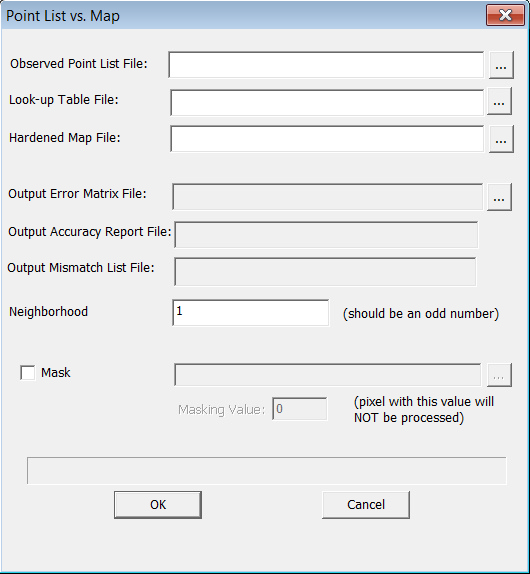Select "Validation->Type Validation->Point List vs. Map", you can validate a hardened soil map with a point list file containing field observations.

The observed point list file contains information about the samples locations. The observed point list file has the following format:
PointID X Y SoilName
index1 X1 Y1 soilName1
index2 X2 Y2 soilName2
......
The first row contains the column headings and PointID contains the IDs assigned to the sample points. Xs and Ys are the samples coordinates. SoilName contains the observed soil names at sample locations.
Look-up table file records the the soil IDs and the corresponding soil names. This file links the soil name in the field observation file with the ID in the hardened soil type map so that comparison can be made. A look-up table file has the following format:
SoilID SoilName
soilID1 soilName1
soilID2 soilName2
......
The first row contains the column headings. SoilID contains the IDs assigned to the soils in the hardening process. These IDs are the IDs in the file name of the fuzzy membership file for the soil types. SoilName contains the soil type names used to describe the soil at the field points.
Hardened map file should be in .3dr format. Different soil types in this map are differentiated based on the SoilID.
Neighborhood size defines a window over which the most frequently occurred soil types (soilID) will be used as the inferred soil type(soilID).
If you want to use mask, uncheck the box next to "Mask" and specify a mask file.
The outputs of this function include an error matrix file, an accuracy report file and a mismatch list file. The name of three files share the same prefix which is chosen by users, but they have different suffix. For example, if you choose "c:\validation" as the validation result file. SoLIM Solutions will create "c:\validation_Matrix.csv", "c:\validation_Report.txt" and "c:\validation_Mismatch.csv" for you.